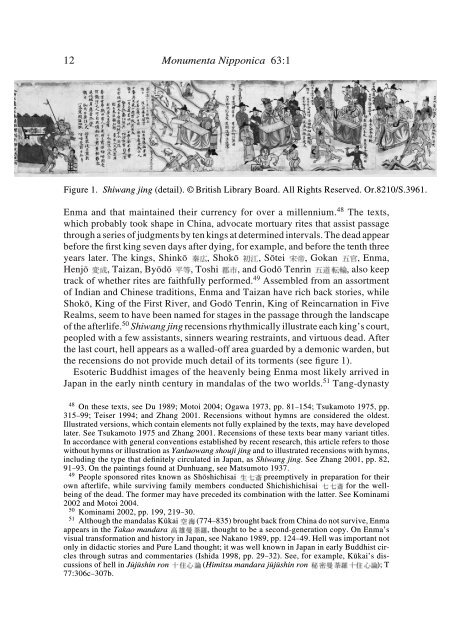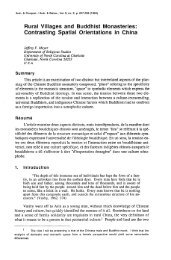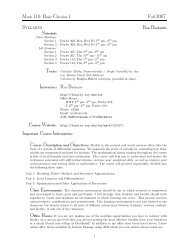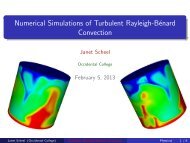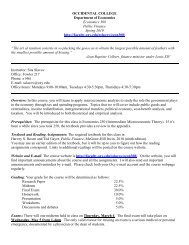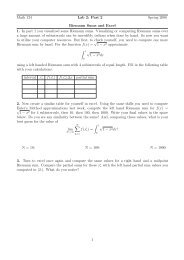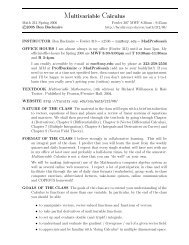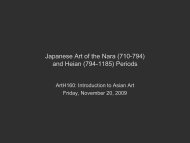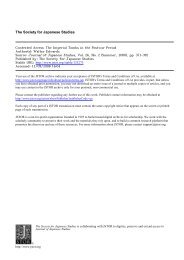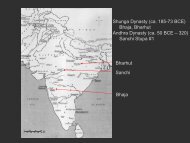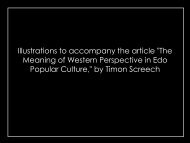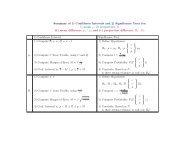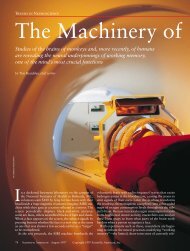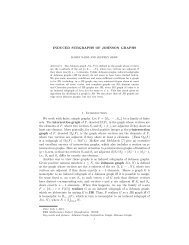A Primer on Japanese Hell Imagery and Imagination - Occidental ...
A Primer on Japanese Hell Imagery and Imagination - Occidental ...
A Primer on Japanese Hell Imagery and Imagination - Occidental ...
You also want an ePaper? Increase the reach of your titles
YUMPU automatically turns print PDFs into web optimized ePapers that Google loves.
12<br />
M<strong>on</strong>umenta Nipp<strong>on</strong>ica 63:1<br />
Figure 1. Shiwang jing (detail). © British Library Board. All Rights Reserved. Or.8210/S.3961.<br />
Enma <strong>and</strong> that maintained their currency for over a millennium. 48 The texts,<br />
which probably took shape in China, advocate mortuary rites that assist passage<br />
through a series of judgments by ten kings at determined intervals. The dead appear<br />
before the first king seven days after dying, for example, <strong>and</strong> before the tenth three<br />
years later. The kings, Shinkô , Shokô , Sôtei , Gokan , Enma,<br />
Henjô , Taizan, Byôdô , Toshi , <strong>and</strong> Godô Tenrin , also keep<br />
track of whether rites are faithfully performed. 49 Assembled from an assortment<br />
of Indian <strong>and</strong> Chinese traditi<strong>on</strong>s, Enma <strong>and</strong> Taizan have rich back stories, while<br />
Shokô, King of the First River, <strong>and</strong> Godô Tenrin, King of Reincarnati<strong>on</strong> in Five<br />
Realms, seem to have been named for stages in the passage through the l<strong>and</strong>scape<br />
of the afterlife. 50 Shiwang jing recensi<strong>on</strong>s rhythmically illustrate each king’s court,<br />
peopled with a few assistants, sinners wearing restraints, <strong>and</strong> virtuous dead. After<br />
the last court, hell appears as a walled-off area guarded by a dem<strong>on</strong>ic warden, but<br />
the recensi<strong>on</strong>s do not provide much detail of its torments (see figure 1).<br />
Esoteric Buddhist images of the heavenly being Enma most likely arrived in<br />
Japan in the early ninth century in m<strong>and</strong>alas of the two worlds. 51 Tang-dynasty<br />
48 On these texts, see Du 1989; Motoi 2004; Ogawa 1973, pp. 81–154; Tsukamoto 1975, pp.<br />
315–99; Teiser 1994; <strong>and</strong> Zhang 2001. Recensi<strong>on</strong>s without hymns are c<strong>on</strong>sidered the oldest.<br />
Illustrated versi<strong>on</strong>s, which c<strong>on</strong>tain elements not fully explained by the texts, may have developed<br />
later. See Tsukamoto 1975 <strong>and</strong> Zhang 2001. Recensi<strong>on</strong>s of these texts bear many variant titles.<br />
In accordance with general c<strong>on</strong>venti<strong>on</strong>s established by recent research, this article refers to those<br />
without hymns or illustrati<strong>on</strong> as Yanluowang shouji jing <strong>and</strong> to illustrated recensi<strong>on</strong>s with hymns,<br />
including the type that definitely circulated in Japan, as Shiwang jing. See Zhang 2001, pp. 82,<br />
91–93. On the paintings found at Dunhuang, see Matsumoto 1937.<br />
49 People sp<strong>on</strong>sored rites known as Shôshichisai preemptively in preparati<strong>on</strong> for their<br />
own afterlife, while surviving family members c<strong>on</strong>ducted Shichishichisai for the wellbeing<br />
of the dead. The former may have preceded its combinati<strong>on</strong> with the latter. See Kominami<br />
2002 <strong>and</strong> Motoi 2004.<br />
50 Kominami 2002, pp. 199, 219–30.<br />
51 Although the m<strong>and</strong>alas Kûkai (774–835) brought back from China do not survive, Enma<br />
appears in the Takao m<strong>and</strong>ara , thought to be a sec<strong>on</strong>d-generati<strong>on</strong> copy. On Enma’s<br />
visual transformati<strong>on</strong> <strong>and</strong> history in Japan, see Nakano 1989, pp. 124–49. <strong>Hell</strong> was important not<br />
<strong>on</strong>ly in didactic stories <strong>and</strong> Pure L<strong>and</strong> thought; it was well known in Japan in early Buddhist circles<br />
through sutras <strong>and</strong> commentaries (Ishida 1998, pp. 29–32). See, for example, Kûkai’s discussi<strong>on</strong>s<br />
of hell in Jûjûshin r<strong>on</strong> (Himitsu m<strong>and</strong>ara jûjûshin r<strong>on</strong> ); T<br />
77:306c–307b.


